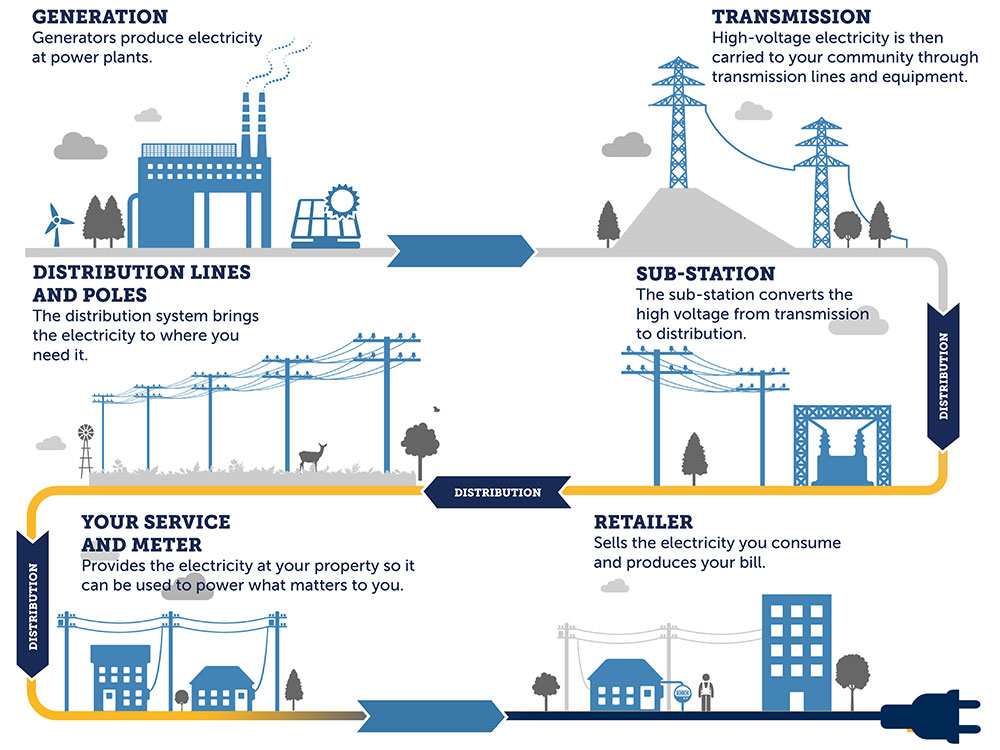
We explain the complex, sophisticated system that brings electricity to you
Aug 20, 2019, 16:59 PMWhen you flip the kitchen light switch in the morning — whether in Lac La Biche or Waterton — the lights come on. But have you thought about what it takes to have a reliable electricity supply?
FortisAlberta, the rural distribution company for a large portion of Alberta, thinks about the reliability, availability and safety of electric power — so you don’t have to.
“We have 350 lineworkers to ensure power is restored as quickly as possible whenever there’s an outage, sometimes climbing poles in the middle of the night, in the middle of a storm,” says Deb Crossman, director of customer operations.
FortisAlberta owns, operates and maintains 60 percent of Alberta’s electricity distribution network and delivers more than 40 per cent of the electricity consumed in the province. It also purchases, installs and verifies power meters, calculates the cost of electrical distribution, and connects and disconnects customers’ supply when requested. For an overview of FortisAberta’s service area, please click here.
If a power failure occurs in the middle of the night, many customers will experience inconvenience no greater than having to reset electric clocks in their kitchens, bedrooms and TV recording devices. But for hospitals, some farms, as well as commercial and industrial customers, Crossman says reliable service is vital.
“It’s a complex system” Crossman says of the Alberta power grid, which includes:
- Large-scale power generators, who supply the Alberta power pool;
- High-voltage transmission systems;
- Distributors such as FortisAlberta; and,
- Power retailers who buy power from the pool and sell it to end-use customers.
FortisAlberta owns and maintains a system consisting of more than 124,000 kilometres of power lines; one million power poles; 200,000 transformers that step power down to household, commercial and industrial voltages; 100,000 street lights in communities such as Vulcan, Airdrie and St. Albert; and remote power meters for each of its customers. Every customer site is affiliated with a rate class. No matter where you live, or how long the power line to your home, every customer within a rate class pays the same rate per kilowatt/hour of delivered power.
Despite Alberta’s capricious and frequently violent weather, Crossman says power outages aren’t the biggest challenge to the distribution system. The key to dependable electrical service is meeting peak demand at each customer location.
At the centre of the FortisAlberta system are 1,100 employees based throughout Alberta, working to make sure power reaches every individual user, regardless of the overall load on the system or the peak demand at any moment.
When Albertans arrive home from work, turn on their kitchen ranges and lights, switch on the TV, power up their computers, and wash and dry a couple of loads of laundry — they expect the electricity to be there. That means the distribution system must be built to handle the maximum energy demand at each home, as well as at every business and industrial site.
“That’s availability, and availability is the key factor in electric distribution delivery charges,” Crossman explains. “It has to be there, whether it’s required every day or once a year, and it’s the reason distribution charges don’t vary as much as each customer’s electrical power usage.”
As technology advances, Crossman says, lots of people in rural areas are looking at saving on electrical bills by installing wind- or solar-power systems. When alternative energy systems are installed, FortisAlberta can accurately meter the ups and downs of each customer’s demand for grid power — as well as each customer’s contributions of alternate energy to the Alberta grid. But, while these customers may be buying less power from their retailers, very few are disconnecting from the distribution system.
“Wind and solar power are highly variable,” she says, “but most people’s power requirements don’t coincide with the wind or sunshine — and batteries aren’t efficient enough to bridge the gaps. They still want that backup grid power, so their furnaces will run when it’s 20 below and they can count on their lights in the middle of the night.”

